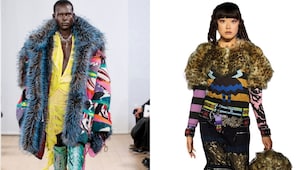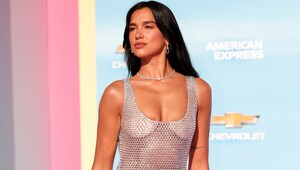6 Female Curators Who are Changing the Indian Art Landscape
Blessed with an eye for detail and a flair to scout for the best talent the art world has to offer
By undefined
23 January, 2020
Blessed with an eye for detail and a flair to scout for the best talent the art world has to offer

11. Rasika Kajaria, Owner and COO,“Growing up, my mother had a keen eye for art and design. She’d make us spend time with artists in their studios, talking to them about their creations. This exercise really sparked my interest in the arts. I bought my first piece at the age of 19 (a large canvas with a bright yellow landscape by Paramjit Singh), and I’ve been collecting art ever since. I have over 150 works in my collection now. But deep down, I knew I wanted to do more than just collect... This led to the birth of Exhibit320—our aim is to discover and encourage contemporary and evolving talent. While curating artwork, it’s extremely important to have a thread of conversation between the works—they could be in different mediums, by artists separated by decades, but if the pieces speak the same language, it works like magic. I strongly feel that we need to put more emphasis on educating and engaging people at a younger age to build their interest in culture. Don’t limit yourself to a particular genre...as you grow, your taste and preferences also change. When I look at my collection over time, I feel I’ve moved from figurative artworks to stronger, more opinionated ones, and now I’m leaning towards subtle, abstract forms. To people looking at investing in art, I’d only say one thing: spend time with the artwork, feel it...if it stays with you, you’d know it’s the one for you. There are a host of big artists, but I’d recommend exploring new names—Sumakshi Singh and Nandan Ghiya both have a very rich visual language, and they should be on your radar.”

22. Radha Mahendru, Senior Curator, Khoj International Artists’“People often ask me about art as an ‘investment’, and I find it the most difficult question to answer. To me, artworks are more of an emotional investment—it’s hard enough for the artist to quantify their work in monetary terms, and then to value and invest in it for financial gain is unfair. My love for art began when the four-year-old me spent the whole day at my mother’s artist friend’s studio—I was in awe! It translated into me becoming a curator. At Khoj, I’m committed to making the art ecosystem more inclusive. I want to work towards creating a platform for voices and practices that don’t easily find a space to articulate themselves—especially young talent from less-established schools. While curating, I like to look at artworks that speak of the times we live in (politically, socially, or environmentally-focused), and work with artists who experiment with different forms. This is a super-exciting time with an incredible diversity of very interesting practices. My work exposes me to budding talent, and I end up collecting a lot of their works... I also like to collect books and limited-ed zines as I think it’s a fascinating format. I believe one should only acquire work that really connects with them. If you’re not well-versed with the world of art, attend exhibitions, seek out artists and talk to them. If you like their work, let them know. In my experience, every artwork is layered and coded with many meanings and symbols, and talking to artists has always made me appreciate their work more

33. Bhavna Kakar, Director and Founder, Latitude“During my days as an independent curator, I realised there’s very little support for experimental artists, and almost non-existent institutional support for art writers. That’s how Latitude 28 was born. Whenever I conceptualise a show, I always think about how the show is going to push the preconceived boundaries of art-making. I believe in curatorial activism. For me, the provision of a critical context, to find a balance between aesthetics and politics is always key—to act with a sense of urgency, contemporary relevance, and a commitment to the future. Some selections are based on the theme of the exhibition, while other artists include the ones I’ve been observing for a few years. Like one of our shows Dissensus, which brought together works by six artists who have witnessed the political and identity crises in regions of ongoing conflict. These days, contemporary artists try to bring forth the values and aspirations of their own societies, as well as humanity, through their works. They have been borrowing elements from the world they live in, and are commenting on the changing social and cultural perceptions. Hitman Gurung, Sheelasha Rajbhandari, Mohammad Ali Talpur, Khadim Ali, Waseem Ahmed, etc., are a few South Asian artists one should look out for. Contemporary artists such as Sudipta Das, Niyeti Chadha Kannal, Ketaki Sarpotdar, and Radhika Agarwala have constantly been pushing the envelope, too. I think we should work towards being more inclusive. In this digital age, most of the museums and galleries have social media accounts, and you can follow their handles for constant updates. See, see and see some more; the eye is your best friend.”

44. Meera Menezes, Independent Art Curator and Critic“I’m passionate about contemporary art...it’s a huge movement right now. My curatorial practice is an extension of my art-writing practice. Back in 1988, I saw the works of Georgia O’Keefe (which included her trademark poppies), and Marc Chagall’s stained glass windows at the Art Institute of Chicago...which made quite an impression on me. Cut to present, I feel the whole art ecosystem needs to be given a fillip. We need more spaces to show art, more coverage in the mainstream press that goes beyond just reporting auction prices, and more outreach programmes by art institutions to create awareness. A lot of my ideas get formed when I’m writing about art or viewing exhibitions. In the process, I start connecting the dots between artists and artworks, and that’s how I arrive at my concepts. I’m naturally drawn to conceptual and minimal works of art, and abstraction is another dimension that fascinates me. I was especially taken by Carolyn Christov-Bakargiev’s curatorial proposition for dOCUMENTA (13). One work that has stayed with me is Pierre Huyghe’s site-specific installation ‘Untilled’ from dOCUMENTA (13)—there was something inherently unsettling about the hybrid ecosystem it offered, and how it spoke to the theme of post-humanism. If you want to get acquainted with the world of contemporary arts, I’d suggest familiarising yourself with the works of Arpita Singh, Nalani Malani, Nasreen Mohamedi and Nilima Sheikh from the older generation. Then, there is Vasudeo Santu Gaitonde, about whom I have written a book. From the younger generation, I gravitate towards Mithu Sen, Raqs Media Collective, Naeem Mohaiemen, Nikhil Chopra, Sahej Rahal, Rohini Devasher, and Sheila Makhijani to name a few.”

55. Shalini Passi, Founder, Shalini Passi Art Foundation and“I am drawn to creativity; it’s what drives me. Growing up, I learned to observe artworks in terms of colour, form and texture, along with what specific styles and movements in art mean. This knowledge greatly influenced my collection—it’s extremely broad, spanning centuries, across continents, and features a variety of mediums and styles. I’m really inspired by the Bauhaus art school, as this movement combined crafts and design with fine arts—treating these practices with equal importance. This cross-disciplinary approach to creativity and curation is central to the work of my Foundation, where we are continuously seeking to encourage and merge the worlds of architecture, art, design, craft, and fashion. We’re keen to support and encourage experimental, new practices in the arts, giving a platform to young emerging artists. It’s always intriguing to see how contemporary artists absorb their experience and knowledge of what has been done before, and project these ideas into their practice. For instance, a number of Indian artists explore ideas of spirituality—inherent to India’s cultural heritage—and the traditional mediums used to convey them, to create experimental, new works with a contemporary aesthetic. Like Praneet Soi’s style of painting is contemporary in its use of clean, bold lines, but the way he disorients our notions of pictorial space—placing foreground and background on the same plane—reminds me of the Indian traditions of miniature paintings. Other artists who demonstrate a more conceptual approach to this rethinking of their heritage are Astha Butail, whose work deliberately seeks to explore the concept of memory and living traditions that are passed down through generations; Rathin Barman, who looks at landscapes not just in terms of their physicality, but the space that it occupies in the mind; and Amshu Chuki, who explores ways of story-telling through art. If you’re looking at collecting art, my only advice would be to buy works that you find challenging; these are the pieces that will still be interesting in years to come.”

66. Vidya Shivadas, Curator and Director, Foundation for Indian Contemporary“Art came to me in many ways, not necessarily as paintings, but as illustrations in books, or the calendar images that my parents put up in the house. My interest in it also developed as I studied disciplines like History and Sociology, and art became a fascinating way of engaging with them. I began curating by default during my time at the Vadehra Art Gallery. But, it has been a very interesting way of exploring different aspects of art practice and dissemination. There are many curators working in the field, but my learning has happened from artists themselves. I’ve spent many years watching them work with the principles of display, and negotiate with institutional structures to make important exhibitions. Picking a favourite artwork isn’t easy, but if I had to, it would be Benode Behari Mukherjee’s Tree Lover: it’s a moving portrait of a man standing under a tree...there’s something simple and profound about this work! My interest lies in different kinds of works—I think art works at so many levels, and this complexity is never easily reducible. Some of my exhibitions have been about the gaps in art history, others explored institutional structures or reception, and some the formation of feminist subjectivists. At Foundation for Indian Contemporary Art (FICA), a not-for-profit organisation, we’re looking at displays and exhibitions within larger learning, and collective processes like art fairs to engage with the audience. The fairs present us with opportunities of coming in contact with many people, both specialists in the field and the layperson, and I think it really depends on all of us to make the most of this, and further the cause of the art world.”
Comment
more from Celebrity

8 stylish clutches that prove every holiday outfit needs a statement sidekick

Exciting holiday gift ideas for people who want claim to want "nothing"

Clashing prints and bold colours are fashion’s favourite chaos and here’s how you can wear them right

Hot chocolate season has arrived and it's time your wardrobe got the memo

Your party calendar knows that it’s sparkly heels season! Here are our picks

From power florals to sultry musks, we’ve decoded the perfumes that vibe with every version of you

The ultimate rhinestone edit for your most extra holiday fashion moments

Lit Christmas gifts that deserve a spot on every book lover’s shelf
